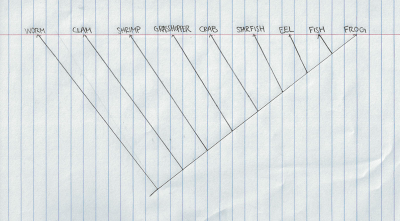Part I
1. What types of physiological problems do humans encounter at high altitudes?
Headaches, dizziness/lightheadedness, shortness of breath, fatigue
2. What symptoms did the climbers exhibit that might be related to altitude? Explain.
Headache, deep breathing, fatigue. Shortness of breath would be caused by the lack of pressure of oxygen in high altitudes which leads to the climbers to breath deeper. Fatigue is caused by the lack of oxygen as not enough oxygen is taken in (compared to sea level) to energize the cells. Headaches may also be caused by the lack of oxygen that is going to the brains.
3. Compare the air at 18,000 feet (atmospheric pressure 280 mm Hg) to the air at sea level (760 mm Hg). What specific changes in the primary atmospheric gases (nitrogen, oxygen, carbon dioxide) might occur? Are they significant?
The composition of earth's atmosphere is 78% nitrogen, 21% oxygen and 1% other gases (including carbon dioxide). There is less pressure at 18 thousand feet than there is at sea level, which means that the density of oxygen molecules is less and therefore would mean the amount of oxygen inhaled by a human being at 18 thousand feet would be lower than one at sea level. (Air pressure in atmosphere is supposed to be greater than the pressure inside the lungs so that the air would "go into" the lungs)
4. What is the specific pulmonary response to high altitude? [Assume you are considering a subject at rest.]
Lowered oxygen density in the atmosphere means less oxygen intake which means that the heart will pump harder to get more blood to pump throughout the body to try and catch up to the normal amount of oxygen that would be distributed at sea level.
5. How will this response affect overall blood gases? What about oxygen loading and unloading from hemoglobin? Explain how you arrived at your conclusions.
There will be less oxygen binding to the hemoglobin in the blood as there is less oxygen in the atmosphere. There will be a higher affinity of RBC for oxygen
6. After breathing at altitude for a few days, the body normally begins producing more 2,3-DPG. What is the significance of this change? How will it affect the pulmonary changes observed?
2,3 DPG helps decreases the affinity of RBC for oxygen which means that the body will be able to increase the amount of oxygen distributed to the tissues as less would stick to the RBC. The person will be less fatigued, have a lower heart rate and less headaches
Part II
1. What physiological changes is Emily referring to (above) that will occur when someone lives at altitude for an extended period?
The body learns to increase production of erythrocytes, which increases oxygen in blood as there are more RBCs.
2. How are these changes advantageous?
Cells in the body will receive more oxygen
3. What is the specific physiological pathway that results in the changes described?
Kidney detects low oxygen level and secrets erythropoietin, stimulates RBC production in bone marrow, more RBC = More hemoglobin = more oxygen in blood = more oxygen to tissues
Part III
1. How would the oxygen and Gammow bag help Mark?
Oxygen and Gammow bag will increase the amount of oxygen in Mark. The bag increases the atmospheric pressure, which leads to less strenuous breathing because more air is going into the lungs.
2. If you were a member of the medical team examining Mark, what types of tests would you run? Why? [Try to focus on what types of things you would like to measure, whether or not you know of a possible test for them.]
Blood sample, see concentration of oxygen/CO2 and pH levels
3. What types of results do you expect to find? Explain your reasoning.
Lower oxygen/CO2 levels in blood compared to sea level (lower pH) because there is less oxygen at 18 thousand feet than at sea level. So the body is trying to play "catch up" to maintain the distribution of oxygen but cannot.

















